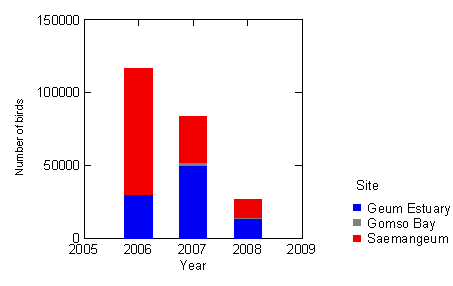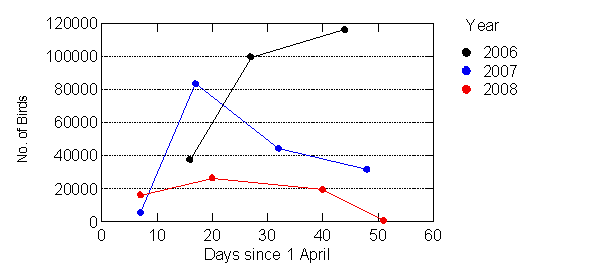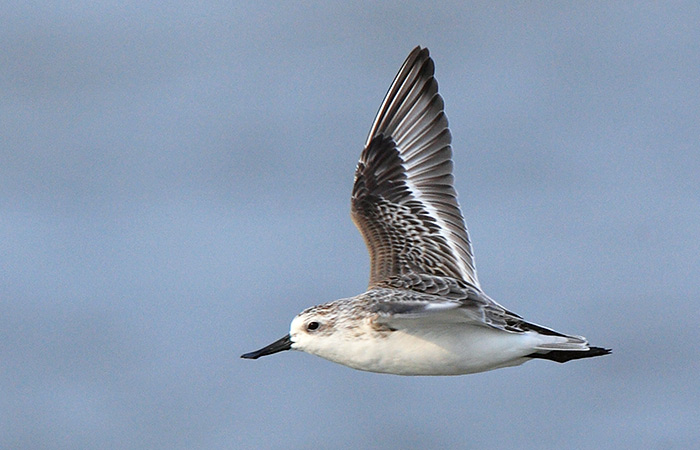A Case Study of Two Iconic Species
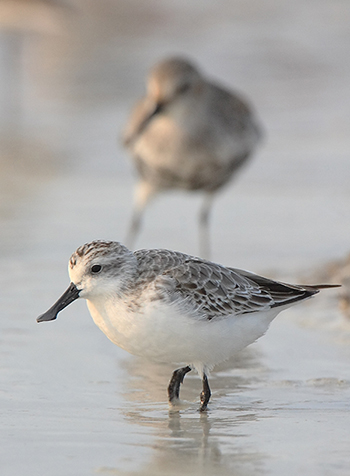
Photo © Kjetil Schjolberg
Tidal-flats may look uniform at first glance, but close examination shows that different sites differ greatly in their sedimentology, and hence the invertebrates and shorebirds that they support. Saemangeum was vast and diverse until 2006, with a complex system of substrates and two free-flowing rivers supporting 19 shorebird species in internationally important concentrations. Between 1997 and 2005, these included the world’s largest concentrations of staging Spoon-billed Sandpiper and Great Knot.
Both of these species depend on tidal-flats outside the breeding season. The Spoon-billed Sandpiper breeds in coastal Chukotka and Kamchatka and migrates through the Yellow Sea to non-breeding grounds in the Bay of Bengal, Inner Gulf of Thailand and the southern China Sea. The Great Knot breeds in eastern Siberia, migrating largely through the Yellow Sea to non-breeding grounds centred on northern Australia.
It is likely that the foraging methods of the Spoon-billed Sandpiper are unique and highly specialised, given that its’ spatulate bill has no parallel in the bird world. Throughout its wide and fragmented non-breeding range, the species prefers “mixed sandy tidal mudflats with uneven surface and very shallow water, mainly in the outermost parts of river deltas and outer islands”.
Between 1998 and 2005, most Spoon-billed Sandpipers in Saemangeum were observed only when coming into roost at Simpo and Okgu (towards the outer part of the system). During the SSMP (2006-2008), the majority of birds were still found at Okgu and Simpo, feeding on adjacent tidal-flats with very low relief which continued to be alternately exposed and covered by the greatly reduced tides that followed sea-wall construction.
Within the Geum Estuary (now one of the world’s most important sites for the species), the Spoon-billed Sandpiper is similarly highly localised, with several individuals regularly returning to the same small patch of wave-washed sand at high-tide, to feed in adjacent patches of highly saturated sand (mixed with silt) on the falling tide. Numbers in the Geum Estuary seemed to increase slightly between 2006 and 2008, but not sufficiently to account for the missing Saemangeum birds (Figure 1).
The global population of this Critically Endangered species is now estimated at between 150-300 pairs (Zöckler in lit., 2008). While there are multiple causes, the “main reason for the decline has been suggested to relate to the habitat conditions along the migration route”. An International Action Plan for the Spoon-billed Sandpiper further identifies changes to the dynamism of estuaries due to barrage construction. It cites the example of the Nakdong Estuary, where “several hundred” were recorded, with less than ten there annually in years following barrage construction. Within Saemangeum as tide dynamics declined, SSMP counts of Spoon-billed Sandpiper also declined, from a peak of 34 in 2006, to 31 in 2007, to only 3 in 2008.
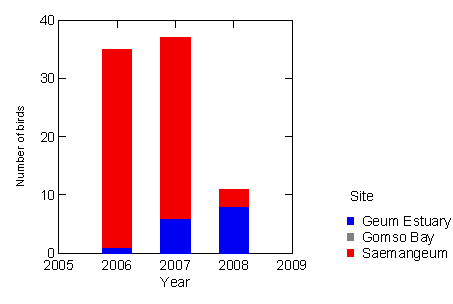
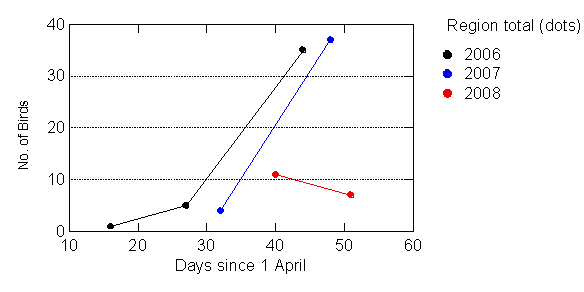
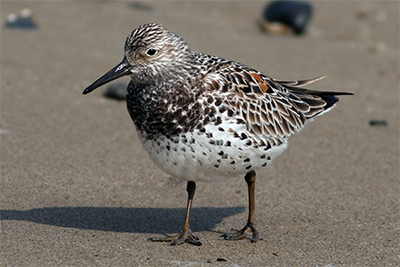
While there is some overlap in habitat between the two species, Great Knot prefer extensive tidal-flat systems, often many kilometres wide. Within these sites Great Knot typically feed at the waters edge following the receding tide out in order to feed on newly exposed tidal-flats where prey are most easily captured. Foraging studies in north-western Australia and the ROK have shown that Great Knots feed largely on clams, cockles and similar shellfish which are located by touch, pulled out from the mud, and swallowed whole. It is a specialised diet requiring considerable adaptation to the digestive tract and sensory organs. Perhaps as a result, Great Knots rarely feed in any habitats except tidal-flats.
Great Knot numbers in Saemangeum have fallen strongly following closure of the sea-wall (Figure 3). Before then they had been found in vast, dense flocks feeding mostly in the inner parts of the Dongjin and Mangyeung Estuaries. During the SSMP study period, the largest flocks found were recorded in the areas of lowest relief - Okgu, Simpo and some offshore islands – which were still influenced by tides.
In 2006, the Great Knot had a population of 380,000, of which 176,000 were estimated to migrate through the ROK on northward migration, including 60,000 at the Dongjin and 59,000 at the Mangyeung respectively. Saemangeum and Yalu Jiang in China were the only sites to hold more than 10% of the population, with Asan Bay and Namyang Bay and the Geum Estuary holding more than 5%. With the reclamation of Saemangeum and also of much of Asan and Namyang Bays the population of Great Knots has declined greatly, evident in counts from Saemangeum, the SSMP Study Site and the ROK. In contrast, staging Great Knots have shown no obvious decline at Yalu Jiang in the Chinese part of the Yellow Sea or in Japan between 2000 and 2007 (Amano H., in lit. 2008).
